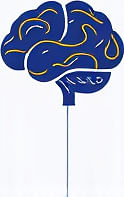Building Inclusive Remote Teams for Autistic Individuals
 by Lilian Nienow
by Lilian Nienow
Remote work offers unique opportunities for autistic adults to thrive, but creating inclusive teams requires thoughtful strategies. This article explores practical advice and hacks to support productivity and work-life balance, fostering environments where neurodivergent talents can flourish.

Remote work has opened new possibilities for many, particularly for autistic individuals who may find traditional office settings overwhelming. This approach allows for greater control over one's environment, which can lead to improved focus and comfort.
One key aspect is establishing clear communication routines. For instance, using scheduled check-ins can help reduce unexpected interactions, making it easier to maintain a steady workflow. Remote work enables this flexibility, letting individuals set boundaries that suit their needs.
In team settings, providing options for asynchronous collaboration is essential. This means tools like shared documents or recorded updates allow participation at preferred times, minimizing the pressure of real-time discussions. Such practices promote a sense of belonging and reduce anxiety.
Sensory sensitivities are common, so creating personalized workspaces is vital. Simple adjustments, like noise-cancelling headphones or soft lighting, can make a significant difference. Autistic individuals often benefit from these changes, leading to better concentration and output.
To enhance productivity, breaking tasks into smaller steps can be helpful. This technique, known as task chunking, prevents overload and builds momentum throughout the day. Implementing daily routines with built-in breaks supports sustained energy and prevents burnout.
Team leaders play a crucial role in fostering inclusivity. Offering training on neurodiversity awareness helps colleagues appreciate different working styles. For example, recognizing that some may need more processing time before responding to queries.
Supportive tools are another area to explore. Apps that block distractions or track time can aid in managing daily activities. Productivity tips like these are adaptable, ensuring they align with individual preferences.
Work-life balance is often challenging, but setting strict end-of-day routines can signal when to stop working. This might include a short walk or a favorite activity to transition away from tasks. Such habits help maintain overall well-being.
Practical Hacks for Daily Success
Here are some actionable strategies:
- Use visual schedules to outline the day's tasks, providing a clear roadmap.
- Incorporate regular movement breaks to address any restlessness.
- Choose communication platforms that support text-based interactions, reducing the need for verbal exchanges.
- Set up a dedicated quiet zone at home to minimize disruptions.
These hacks can be customized based on personal experiences, making them more effective over time.
Encouraging peer support within teams builds a stronger community. For example, creating informal chat channels for sharing experiences can foster connections without formal obligations. Neurodiversity in teams brings diverse perspectives, enriching problem-solving.
Monitoring progress is important, but it should be done with sensitivity. Regular self-checks rather than constant oversight allow for autonomy and growth.
Finally, advocating for oneself is a valuable skill. Learning to express needs clearly can lead to better accommodations and a more supportive atmosphere.
Maintaining Long-Term Balance
Over time, these strategies contribute to a sustainable routine. Prioritizing rest and hobbies outside work ensures that energy levels remain high.
In summary, by integrating these approaches, remote teams can become more inclusive spaces. This not only supports autistic individuals but also enhances overall team dynamics.
